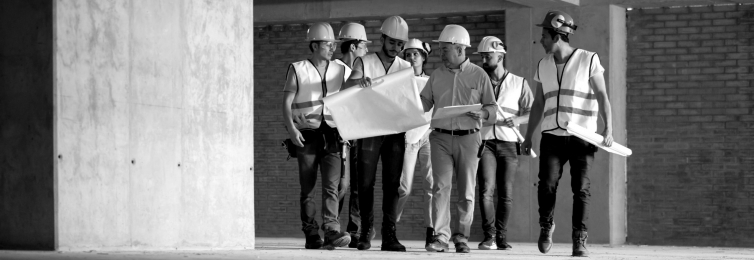The term “microlearning” may not be familiar to you, but it’s a rapidly growing trend in learning and development methodology. Simply defined, it’s the quick delivery of training information in small chunks that are then immediately applied by the learner. And, if you manage people on the job-site, you’re probably already implementing this highly effective technique—without even realizing it.
Here, Builders Mutual experts Mac Bell, Risk Management Regional Manager, and Melissa Piercy, Builders University Program Manager, share their insights on microlearning and how you can use it to sharpen your team’s performance.
Use it or lose it.
If you have ever tried to learn a new language, you know that, without consistent practice, you forget the words (and those pesky verb conjugations) really quickly. In fact, when we don’t reinforce what we learn, we’ll lose 90% of that information in 30 days. Microlearning is proven to be effective primarily because it’s an effective brain hack. Instead of sitting in a two-hour training getting bombarded with instruction, learners receive a short burst of material—in-person lesson, checklist, infographic, or video—and then apply that lesson right away. They aren’t taught what they don’t need, and the learners are quickly and productively up and running.
Learn. Do. Repeat.
Currently, your crew training may consist of you standing in front of the group reading off pages of information on broad topics. The employees “listening” then sign off that they were there, and they go back to their jobs. But did any of that information stick?
Microlearning is ideal for the construction job-site, especially with regard to safety practices. It’s an efficient use of time for you and your crew, and you’ll know whether or not actual learning—and application—is taking place. Instead of those long training hours, or even weekly toolbox talks, microlearning involves three simple steps:
- Tell, show, or demonstrate the desired action.
- Observe the person doing the action.
- Provide immediate feedback. If the action needs to be corrected, explain why and how to correct, and observe again. When the action is correct, a high-five is in order.
The most effective job-site microlearning technique is one you’re probably already doing: the in-person demonstration. For example, you’re walking through the site and see a worker using a ladder incorrectly. Stop, show the worker the proper technique, and have the worker get back on the ladder the right way. You’ll know immediately that the lesson was learned because it was applied—and the whole training took less than five minutes. (This approach also works peer to peer, so encourage your team to do it, too.)
Another way of applying this same lesson is to use positive reinforcement. In other words, when you’re walking through the job-site and see someone using the ladder correctly, stop to tell the person. When we recognize correct behavior with positive feedback, the praise actually produces the highest level of learning.
Delivering nuggets of wisdom
In addition to in-person demonstrations, the opportunities for microlearning are everywhere on the job-site. And whether they are planned or spontaneous, the techniques are simple. The key is to focus on one specific area of safety. Perhaps you deliver a checklist on ladder inspection (using words or pictures). Or maybe you show a short video that you made or pulled from YouTube. (OSHA, for instance, has numerous training videos available.) Then, as with the live demo, you can observe immediate application and give feedback.
Gamification—or learning through video gaming—is another great way of applying microlearning. Many free safety apps include engaging video games for job-site safety. This culturally relevant format provides quick, specific information for training. The player goes through an information upload and immediately applies it to the game—then the player either wins or loses. Either way, the person learns.
Small lessons. Big impact.
Microlearning works. The small-chunk format fits our info-overloaded world. More importantly, microlearning breeds success. Whereas eyes may glaze over in a group presentation, this approach engages the mind and body of the recipient.
As a GC or crew supervisor, you’re most likely already doing this. You just didn’t know the moniker. You may have thought, “I don’t have time to do training!” But you’ve been doing effective microlearning all along! Shift your perspective, and make the effort more intentional and purposeful. With this new mindset, employee training becomes more doable and successful.
For more information, contact your Builders Mutual Risk Management consultant and check out our safety blogs for your microlearning topic inspiration.




 Find an
Find an